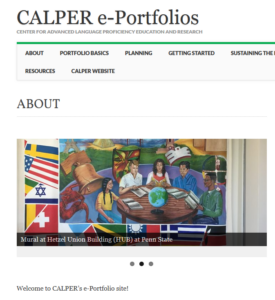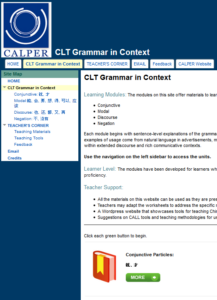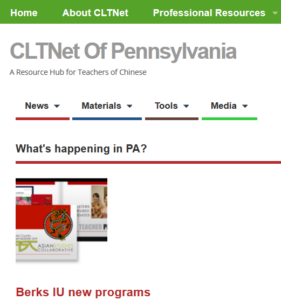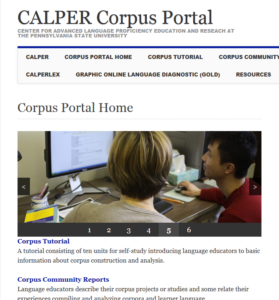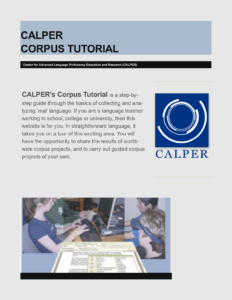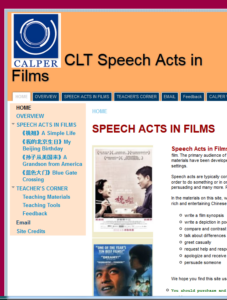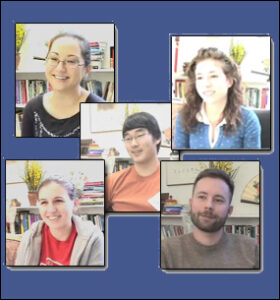Assessing Language Development
Assessing Language Development is a website intended to familiarize language teachers with various approaches to assessing language development.
The forms of assessment described on our site are not particular to any given language but can be used with learners of any language, including Chinese, Russian, Japanese, Arabic, and Korean as well as more commonly taught languages like Spanish, French, and German and English as a Second Language.
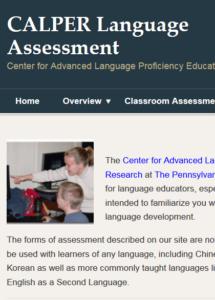
CALPER ePortfolios Resource site
A resource site on how to get started with using ePortfolios in language courses and programs. Still under development.
CLT Grammar in Context
Grammar in Context are online materials for high-intermediate, low-advanced and advanced learners of Mandarin Chinese.
Grammar in Context includes Learn—Practice—Self-check and Vocabulary Support for 16 commonly used particles in Mandarin Chinese. The units can be used in blended learning environments, for self-study, and traditional classroom settings.
CLTNet of PA Resource Hub
This website is intended as a resource hub. Teachers will find i) information relevant to CLT in Pennsylvania, such as news from communities and institutions; ii) references to quality teaching materials; iii) sources for media in Chinese; iv) selected tools for teaching and learning, and more.
Subscribe to a feed and get notifications about new posts directly to your inbox.
Visit the site and join the network of teachers of Chinese in Pennsylvania.
Corpus Portal
CALPER’s Corpus portal is a gateway to information and tools for teachers interested in exploring ways in which natural language (compiled into a corpus) can be used in language teaching and learning and assessment. It can also provide quick and easy access to all corpus-related materials developed by CALPER.
Corpus Tutorial
The tutorial consists of ten units of self-study devoted to corpus construction, basic corpus-analytical techniques and applications. Designed for language educators. It guides you step-by-step through the basics of collecting and analyzing ‘real’ language. If you are a language teacher working in school, college or university, then this website is for you. In straightforward language, it takes you on a tour of this exciting area. You will have the opportunity to share the results of worldwide corpus projects, and to carry out guided corpus projects of your own. In order to use this tutorial, you will need to have access to the Internet, a computer that uses Microsoft Word (details of versions that will support wordsmith), and basic computer skills.
Speech Acts in Films
Speech Acts in Films is a site where students of Mandarin Chinese learn to examine, understand, and practice social language through the medium of film. The primary audience of the materials are low-advanced and advanced learners who completed approximately two years of language instruction. The materials have been developed for blended-learning environments, but can also be used for self-study, or as supplemental materials in traditional instructional settings.
In the materials on this site, we developed exercises, activities, explanations and worksheet for learners to practice speech acts through the content of four rich and entertaining Chinese films. Among other objectives, students will learn how to:
- write a film synopsis
- write a depiction in poetic style
- compare and contrast
- talk about differences and change-of-states
- greet casually
- request help and respond to requests for help
- apologize and receive apology
- persuade someone
Understanding Heritage and Domestic Language Learners
Johnson, K. E., & Hall, J. K. (2010). Understanding heritage and domestic language learners. University Park, PA. CALPER Publications.
Understanding Heritage and Domestic Language Learners combines case-based learning with multimedia technology. It is organized around six conceptual strands:
– Descriptions of learners’ backgrounds and prior experiences
– Perceptions of heritage/domestic definitions and distinctions
– Motivation for language study
– Perspectives on their strengths/weaknesses as language learners
– Descriptions of learners’ plans for the future
– Explorations
The resource provides a window into actual language classrooms, showcasing the complexities of addressing the needs of both heritage and domestic learners in the same language classroom.
